Improving Fuel Efficiency: If you own an older car, you might be wondering how to improve its fuel efficiency. Fuel efficiency is the ability of a vehicle to use fuel effectively and minimize waste. It is an important factor in reducing emissions, saving money, and increasing energy sustainability.
However, older cars tend to have lower fuel efficiency than newer cars, due to various reasons such as wear and tear, outdated technology, or poor maintenance. This means that they consume more fuel and emit more pollutants than necessary, which can harm both your wallet and the environment.
Fortunately, there are some ways to improve fuel efficiency in older cars, without having to buy a new one. In this blog post, we will share some tips and tricks on how to do that, covering topics such as:

Using High-Quality Gasoline and Additives
One of the easiest ways to improve fuel efficiency in older cars is to use high-quality gasoline and additives.
Not all gasoline is created equal.
There is plain old regular, and then there is regular gasoline that meets a higher standard, known as “Top Tier.”
Top Tier gasoline was developed in 2004 to go beyond the minimum standard for detergent additives to better protect increasingly sophisticated engines from carbon buildup and deposits on the intake valves—which can result in a rough idle, acceleration hesitation, knocking/pinging, and reduced fuel economy.
By using Top Tier gasoline, you can keep your engine running smoothly and efficiently, as well as prevent corrosion and damage to your fuel system.
You can find a list of Top Tier retailers here.
In addition to using high-quality gasoline, you can also use fuel additives to enhance your fuel quality and performance.
Fuel additives are substances that are added to gasoline to improve its properties, such as octane rating, combustion, lubrication, cleaning, and stability.
There are different types of fuel additives, such as octane boosters, fuel stabilizers, fuel system cleaners, fuel injector cleaners, and anti-gel additives. Each type has a specific purpose and benefits for your engine.
For example, octane boosters can increase the octane rating of your gasoline, which can prevent engine knocking and improve power and efficiency.
Fuel stabilizers can prevent gasoline from degrading over time, which can cause gum and varnish formation and reduce fuel economy.
Fuel system cleaners can remove deposits and contaminants from your fuel system, which can improve fuel flow and combustion.
Fuel injector cleaners can unclog and clean your fuel injectors, which can improve fuel spray and atomization.
Anti-gel additives can prevent diesel fuel from gelling in cold weather, which can cause fuel starvation and engine damage.
However, not all fuel additives are created equal.
Some may contain harmful chemicals or additives that can damage your engine or the environment.
Some may not be compatible with your vehicle or your fuel type.
Some may not be effective or necessary for your engine condition.
Therefore, you should always read the label and follow the instructions of the fuel additive you choose.
You should also consult your owner’s manual or a trusted mechanic before using any fuel additive.
Improving Fuel Efficiency By using high-quality gasoline and additives, you will improve your fuel efficiency in older cars by up to 10 percent, according to some studies.
This can save you money on gas and reduce your emissions. However, you should also remember that using high-quality gasoline and additives is not a substitute for proper maintenance and driving habits.
You should still perform regular tune-ups, check your tire pressure, change your oil and filters, and avoid aggressive driving to maximize your fuel efficiency.
Gas Cap,Fuel Cap For 2000-2019 Dodge Ram 1500 2500 3500 Charger Challenger Dart Durango Journey Nitro Grand Caravan Caliber Dakota & Chrysler 200 300 Town and Country Aspen Sebring & Jeep Wrangler JK
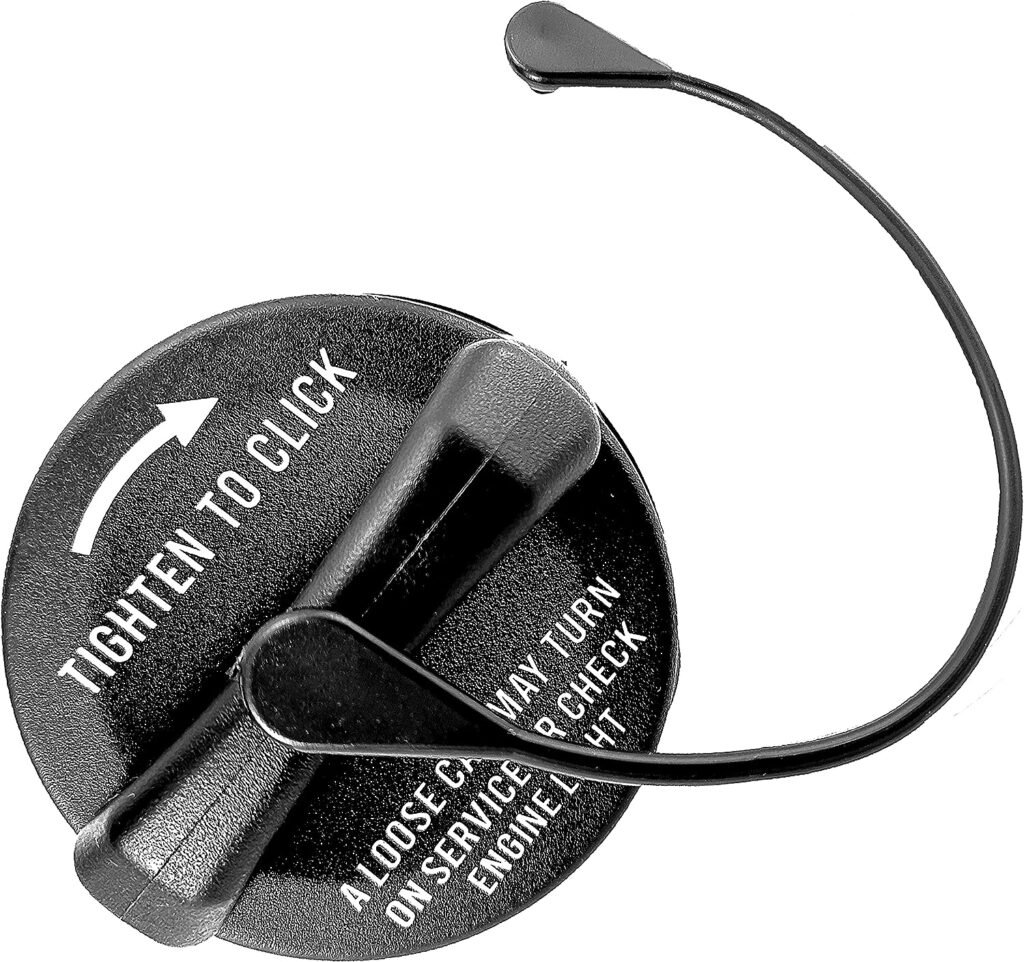
Replacing the Gas Cap and Fixing Any Fuel Leaks
Another way to improve fuel efficiency in older cars is to replace the gas cap and fix any fuel leaks.
The gas cap is a small but important component that prevents fuel vapors from escaping the tank and maintains the correct pressure in the fuel system.
A loose, damaged, or faulty gas cap can cause fuel to leak from the tank, reducing fuel efficiency and increasing emissions.
Moreover, a leaky gas cap can trigger the Check Engine Light, indicating a problem with the car’s emissions control system.
To prevent fuel leakage from the gas cap, you should regularly check and tighten the gas cap.
You should also inspect the gas cap for any signs of damage, such as cracks, warps, or worn threads.
If the gas cap is damaged, you should replace it with a new one that is compatible with your vehicle.
You can find a list of compatible gas caps here.
In addition to the gas cap, you should also check for any other fuel leaks in the fuel system.
Fuel leaks can occur in various parts of the fuel system, such as the fuel tank, fuel lines, fuel injectors, fuel pump, or fuel filter.
Fuel leaks can cause fuel loss, poor performance, fire hazards, and environmental damage.
Some common signs of fuel leaks are:
- A strong smell of gasoline
- A puddle of fuel under the car
- A hissing or dripping sound from the fuel system
- A decrease in fuel economy
- A decrease in power or acceleration
- A rough or hard start
If you notice any of these signs, you should inspect the fuel system for any leaks.
You can use a flashlight, a mirror, or a dye to help you locate the source of the leak.
You should also use protective gloves and eyewear when handling fuel.
If you find any leaks, you should repair or replace the leaking part as soon as possible.
You can find some tips on how to fix a leaking gas cap here and how to fix other fuel leaks here.
By replacing the gas cap and fixing any fuel leaks, you can improve your fuel efficiency in older cars by up to 15 percent, according to some estimates.
This can save you money on gas and reduce your emissions.
However, you should also remember that replacing the gas cap and fixing fuel leaks is not a substitute for proper maintenance and driving habits.
You should still perform regular tune-ups, check your tire pressure, change your oil and filters, and avoid aggressive driving to maximize your fuel efficiency.
These routine maintenance tasks are essential components of Improving Fuel Efficiency, ensuring that your vehicle operates at its optimal performance level and minimizes unnecessary fuel consumption.
1.3 Gallon Gas Tank 5L Backup Gas Can Fits for Motorcycle SUV ATV Most Cars
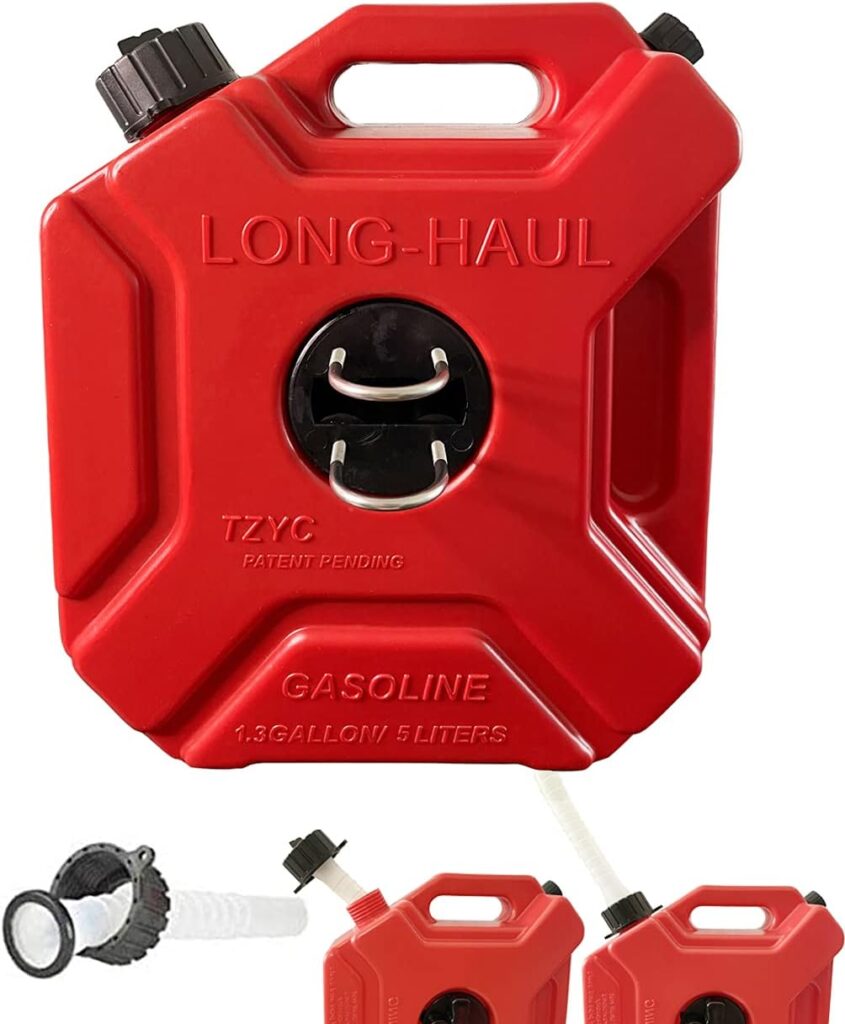
Performing Routine Maintenance and Replacing Worn-Out Parts for Improving Fuel Efficiency
Another way to improve fuel efficiency in older cars is to perform routine maintenance and replace worn-out parts.
Routine maintenance consists of basic maintenance tasks, such as checking, testing, lubricating, and replacing worn or damaged parts on a planned and ongoing basis.
These tasks can help prevent major breakdowns, extend the lifespan of the equipment, and improve its performance.
Some of the most common routine maintenance tasks for older cars are:
Changing the oil and oil filter:
Oil lubricates the engine and reduces friction, heat, and wear. However, over time, oil becomes dirty and loses its viscosity, which can affect the engine’s efficiency and cause damage.
Therefore, it is recommended to change the oil and oil filter every 3,000 to 5,000 miles, depending on the vehicle’s age, condition, and usage.
Checking and replacing the air filter:
The air filter prevents dust and debris from entering the engine, which can affect the combustion process and reduce fuel efficiency.
However, over time, the air filter becomes clogged and restricts the airflow, which can cause the engine to work harder and consume more fuel.
Therefore, it is recommended to check and replace the air filter every 12,000 to 15,000 miles, or more often if the vehicle is driven in dusty or polluted areas.
Checking and inflating the tires:
The tires are the only contact point between the vehicle and the road, and they affect the vehicle’s handling, braking, and fuel economy.
Underinflated tires can increase the rolling resistance, which can reduce the fuel efficiency by up to 3 percent. Overinflated tires can reduce traction and increase wear, which can affect the vehicle’s safety and performance.
Therefore, it is recommended to check and inflate the tires to the recommended pressure every month, or more frequently if the vehicle is driven in extreme temperatures or conditions.
Adhering to proper tire maintenance practices contributes significantly to Improving Fuel Efficiency, as maintaining optimal tire pressure reduces rolling resistance and maximizes fuel economy.
Checking and replacing the spark plugs:
The spark plugs are responsible for igniting the fuel-air mixture in the engine’s cylinders, which creates the power to move the vehicle.
However, over time, the spark plugs can wear out, corrode, or become fouled, which can affect the engine’s performance and fuel efficiency.
Worn or faulty spark plugs can cause misfires, rough idling, poor acceleration, and increased emissions.
Therefore, it is recommended to check and replace the spark plugs every 30,000 to 60,000 miles, depending on the vehicle’s make, model, and type of spark plugs.
By performing routine maintenance and replacing worn-out parts, you can improve your fuel efficiency in older cars by up to 25 percent, according to some estimates.
This can save you money on gas and reduce your emissions.
However, you should also remember that performing routine maintenance and replacing worn-out parts is not a substitute for proper driving habits.
You should still avoid aggressive driving, reduce your speed, and plan your trips to maximize your fuel efficiency.
12V Fuel Transfer Pump Moves 120 Gallons of Gas or Diesel Per Hour. With Car Cigarette Lighter Plug, Battery Clip and Upgraded Carrying Case. Great for UTVs, Vehicles, Boats, Equipment.(80W DC Motor)
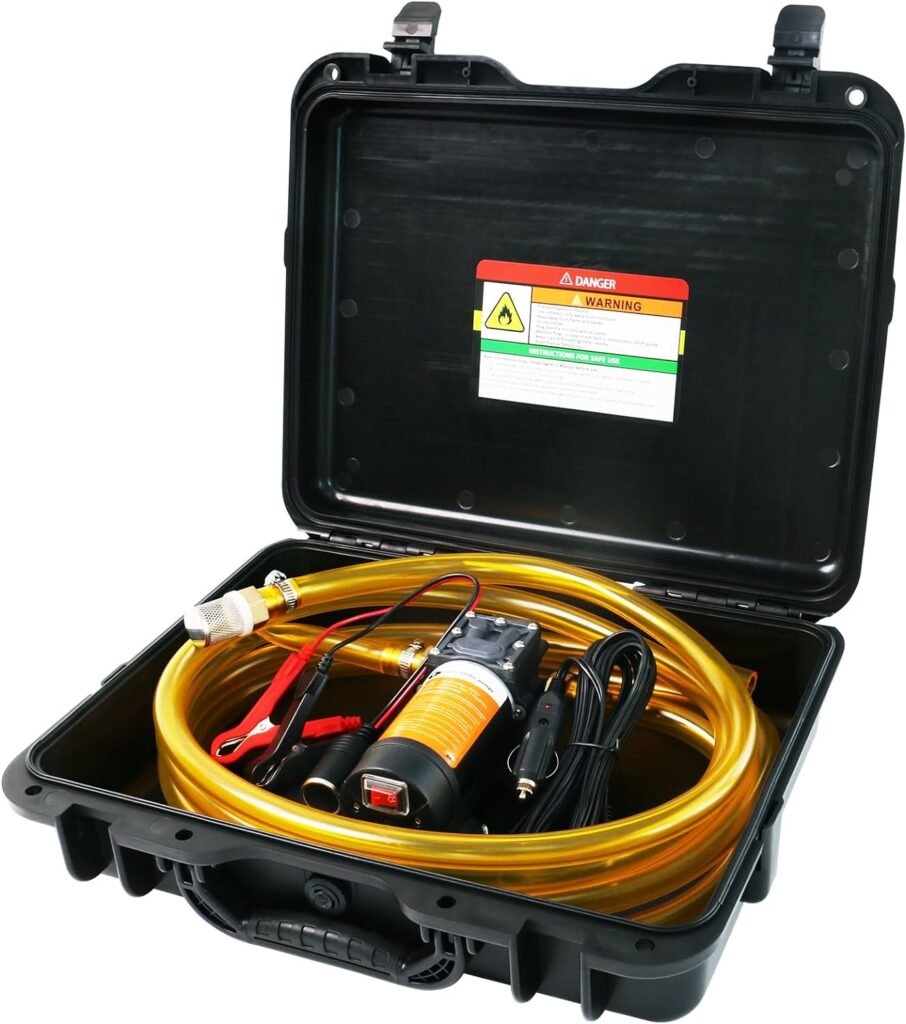
Upgrading Vehicle Parts or Systems that Affect Fuel Efficiency
Another way to improve fuel efficiency in older cars is to upgrade vehicle parts or systems that affect fuel efficiency.
Upgrading vehicle parts or systems means replacing the original or standard parts or systems with improved or enhanced ones that can offer better performance, reliability, or efficiency.
These upgrades can help optimize the vehicle’s operation, reduce fuel consumption, and increase power output.
Some of the most common vehicle parts or systems that can be upgraded to improve fuel efficiency are:
Improving Fuel Efficiency: Fuel injectors:
Fuel injectors play a crucial role in the combustion process by delivering fuel into the engine’s cylinders, where it mixes with air and is ignited by the spark plugs.
However, as the vehicle ages, fuel injectors may accumulate dirt, become clogged, or wear out, leading to disruptions in the fuel spray pattern, quantity, and timing.
This can result in poor combustion, decreased power output, and elevated emissions.
To address these issues and contribute to Improving Fuel Efficiency, it is advisable to upgrade the fuel injectors with high-performance alternatives.
These upgraded injectors can deliver more precise and consistent fuel injection, potentially enhancing fuel efficiency by up to 10 percent.
By investing in the enhancement of the fuel injection system, you can optimize combustion and maximize fuel economy, ensuring your vehicle operates efficiently for miles to come.
Improving Fuel Efficiency: Ignition system:
The ignition system plays a vital role in the combustion process by generating and delivering the electric spark needed to ignite the fuel-air mixture in the engine’s cylinders.
However, as the vehicle ages, the ignition system may degrade, leading to weaker or erratic sparks that can negatively impact engine performance and fuel efficiency.
To address this and contribute to Improving Fuel Efficiency, it is advisable to consider upgrading the ignition system with high-performance components such as spark plugs, wires, coils, and distributors.
These upgrades can produce stronger and more reliable sparks, potentially enhancing fuel efficiency by up to 5 percent.
By investing in the enhancement of the ignition system, you can optimize combustion and maximize fuel economy, ensuring your vehicle operates at its peak efficiency level.
Improving Fuel Efficiency: Exhaust system:
The exhaust system plays a crucial role in maintaining engine performance and reducing emissions by expelling exhaust gases and minimizing noise.
However, as the vehicle ages, the exhaust system may deteriorate due to rust, damage, or restriction, adversely impacting engine performance and fuel efficiency.
To address this and contribute to Improving Fuel Efficiency, it is advisable to consider upgrading the exhaust system with high-performance components such as headers, catalytic converters, mufflers, and pipes.
These upgrades can help reduce backpressure and increase airflow, potentially enhancing fuel efficiency by up to 10 percent.
By investing in the enhancement of the exhaust system, you not only improve your vehicle’s performance but also promote greater fuel economy and reduced environmental impact.
By upgrading vehicle parts or systems that affect fuel efficiency, you can improve your fuel efficiency in older cars by up to 25 percent, according to some estimates.
This can save you money on gas and reduce your emissions.
However, you should also remember that upgrading vehicle parts or systems is not a substitute for proper driving habits.
You should still avoid aggressive driving, reduce your speed, and plan your trips to maximize your fuel efficiency.
Flex Funnel – Wide Mouth Flexible Funnel with Handle, Multi-Functional Large Plastic Automotive Funnels for Cars and Motorcycles, Engine Oil, Liquid, Diesel, Kerosene,Gasoline (2pcs * 5.2″ Black)

Driving More Economically and Avoiding Unnecessary Weight or Drag for Improving Fuel Efficiency
Another way to improve fuel efficiency in older cars is to drive more economically and avoid unnecessary weight or drag.
Driving more economically means adopting driving habits that reduce fuel consumption and emissions, such as accelerating smoothly, maintaining a steady speed, and anticipating traffic.
Avoiding unnecessary weight or drag means removing any items or accessories that add to the vehicle’s weight or aerodynamic resistance, such as roof racks, cargo boxes, or extra luggage.
Some of the most common driving habits and tips that can help you drive more economically are:
Accelerate smoothly and gradually:
Accelerating too quickly or too hard can waste fuel and increase emissions. It can also cause engine stress and wear. Therefore, it is recommended to accelerate smoothly and gradually, using the lowest possible gear for your speed. You should also avoid revving the engine unnecessarily or using the accelerator when starting the engine.
Maintain a steady speed:
Varying your speed too often or too much can waste fuel and increase emissions. It can also cause engine stress and wear.
Therefore, it is recommended to maintain a steady speed, using the highest possible gear for your speed.
You should also use cruise control on the highway, if your vehicle has it, to help you keep a constant speed.
Anticipate traffic:
Anticipating traffic can help you avoid sudden braking and accelerating, which can waste fuel and increase emissions.
It can also help you avoid collisions and traffic jams. Therefore, it is recommended to anticipate traffic, by looking ahead, keeping a safe distance, and following the traffic flow.
You should also plan your route and avoid peak hours, if possible.
Coast to decelerate:
Coasting to decelerate means releasing the accelerator and letting the vehicle slow down naturally, without using the brakes.
This can save fuel and reduce emissions, as well as brake wear.
Therefore, it is recommended to coast to decelerate, whenever it is safe and possible, such as when approaching a red light, a stop sign, or a downhill slope.
You should also keep the vehicle in gear, as modern vehicles automatically cut off the fuel supply when coasting in gear.
Turn off the engine when idle:
Idling, the act of running the engine when the vehicle is stationary, contributes to unnecessary fuel consumption, increased emissions, and engine wear.
By adhering to practices that contribute to Improving Fuel Efficiency, such as turning off the engine when idle, unless necessary for safety or comfort reasons, you can mitigate these negative effects.
Additionally, avoiding engine warm-up periods before driving and instead allowing the engine to warm up through driving can further optimize fuel efficiency.
By minimizing idling time and adopting efficient engine warm-up practices, you can not only reduce fuel costs but also decrease emissions and prolong the lifespan of your vehicle’s engine.
Some of the most common items or accessories that can add to the vehicle’s weight or drag are:
Roof racks and cargo boxes:
Roof racks and cargo boxes can increase the vehicle’s weight and aerodynamic resistance, which can reduce fuel efficiency by up to 25 percent at highway speeds.
Therefore, it is recommended to remove them when not in use or to use rear-mounted ones instead, which have less impact on fuel efficiency.
Extra luggage and passengers:
Extra luggage and passengers can significantly impact your vehicle’s fuel efficiency. Studies indicate that for every 100 pounds of additional weight, fuel efficiency can decrease by up to 2 percent.
To address this and contribute to Improving Fuel Efficiency, it is advisable to remove any unnecessary items from the vehicle or distribute them evenly to prevent overloading. Additionally, it’s important to adhere to the vehicle’s capacity limitations and avoid carrying more passengers than recommended.
By managing weight effectively, you can optimize your vehicle’s performance and minimize fuel consumption, ultimately reducing your carbon footprint.
Low tire pressure and alignment:
Low tire pressure and alignment issues can significantly impact your vehicle’s fuel efficiency.
Research suggests that improper tire pressure and misalignment can increase rolling resistance, leading to a potential decrease in fuel efficiency of up to 3 percent.
To counteract this and contribute to Improving Fuel Efficiency, it is crucial to regularly check and inflate your tires to the recommended pressure at least once a month.
In extreme temperatures or conditions, such as during winter or when embarking on long road trips, more frequent checks may be necessary to maintain optimal pressure levels.
Additionally, it’s essential to inspect and adjust the tire alignment annually, or more frequently if your vehicle displays signs of uneven tire wear or pulls to one side while driving.
Addressing these issues promptly can not only enhance your vehicle’s handling and safety but also contribute to maximizing fuel efficiency over time.
By driving more economically and avoiding unnecessary weight or drag, you can improve your fuel efficiency in older cars by up to 35 percent, according to some estimates.
This can save you money on gas and reduce your emissions.
However, you should also remember that driving more economically and avoiding unnecessary weight or drag is not a substitute for proper maintenance and upgrading.
You should still perform routine maintenance, replace worn-out parts, and upgrade vehicle parts or systems that affect fuel efficiency.
Stark 12V Commercial Portable DC Electric Fuel Transfer Pump Diesel Oil Kerosene Fuel Transfer Extractor Pump Motor Auto Self Priming Pump
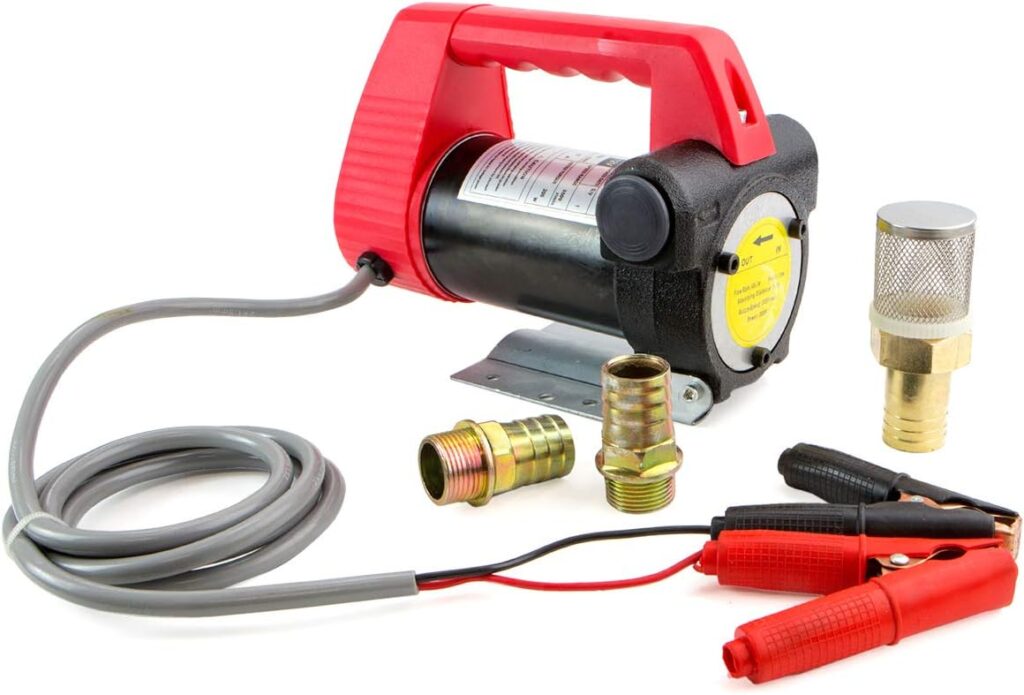
Improving Fuel Efficiency: conclusion
- Using high-quality gasoline and additives
- Replacing the gas cap and fixing any fuel leaks
- Performing routine maintenance and replacing worn-out parts
- Upgrading vehicle parts or systems that affect fuel efficiency
- Driving more economically and avoiding unnecessary weight or drag
By following these methods for Improving Fuel Efficiency, you can boost your car’s performance, reduce your fuel costs, and lower your carbon footprint. However, you should also remember that these methods are not substitutes for each other, but rather complementary. You should combine them with proper maintenance, upgrading, and driving habits to maximize your fuel efficiency.

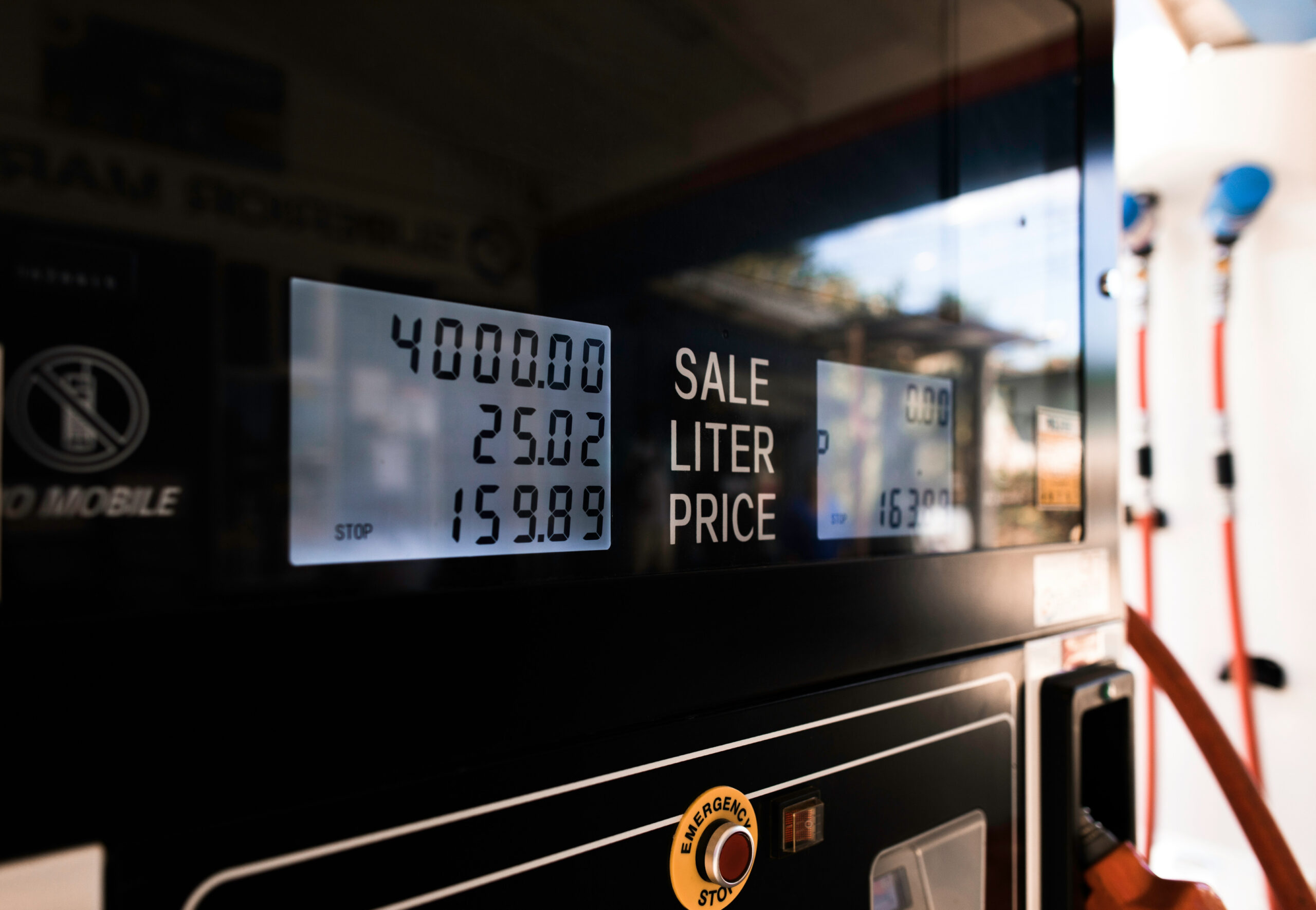



Pingback: Car Care Packages: Are They Useful in 2024?
Pingback: The Best Cars for Night Driving: Cars for Stargazing